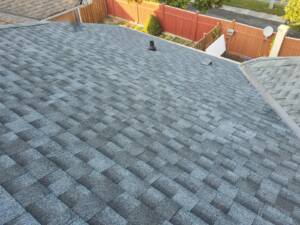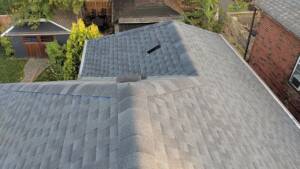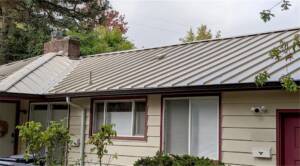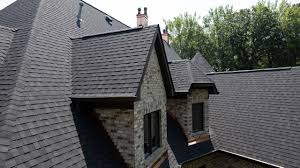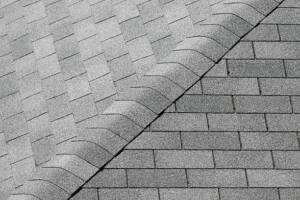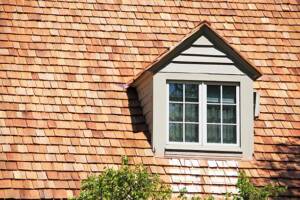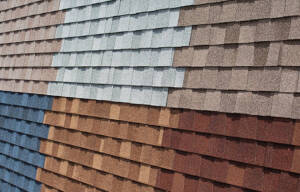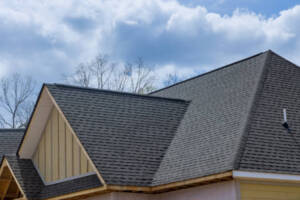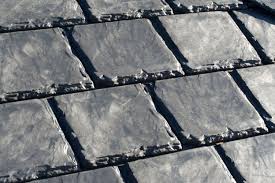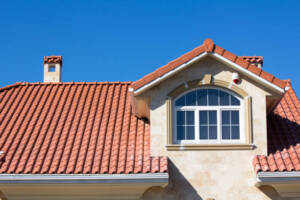Top Roofing Materials & Best Options for the Pacific Northwest
Choosing the right roofing material is crucial—especially in the Pacific Northwest, where rain, wind, and moss can take a toll. Here’s a breakdown of common roofing materials, their pros, cons, and suitability for the region:
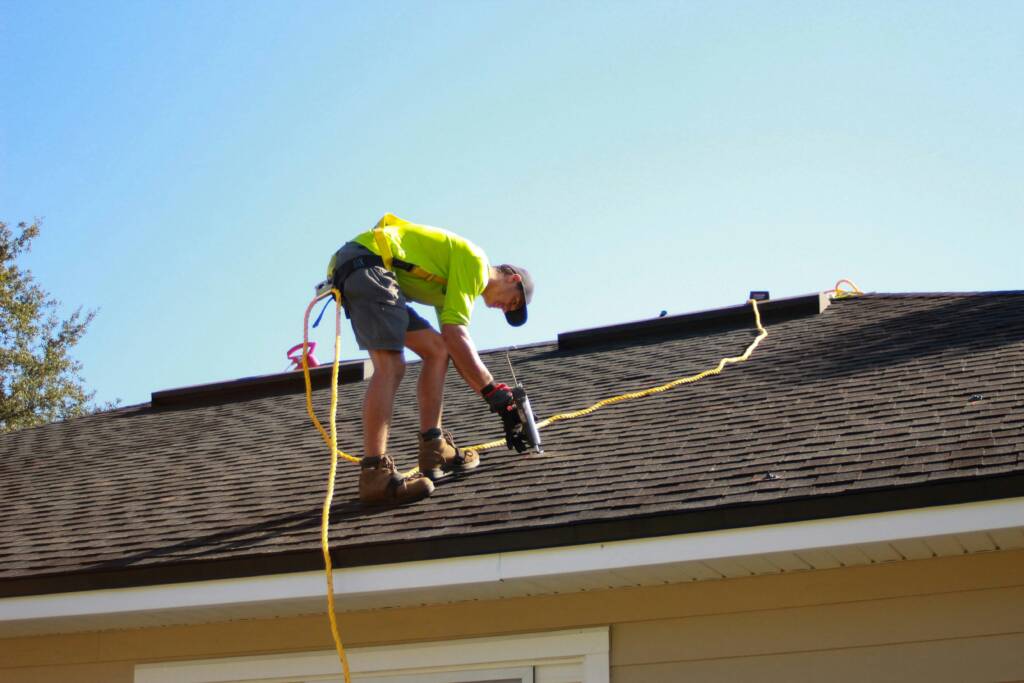
Key Considerations
Metal Roofing
Composite (Synthetic) Shingles
Asphalt Shingles
Cedar Shakes & Shingles
Tile Roofing (Clay or Concrete)
Rubber Shingles
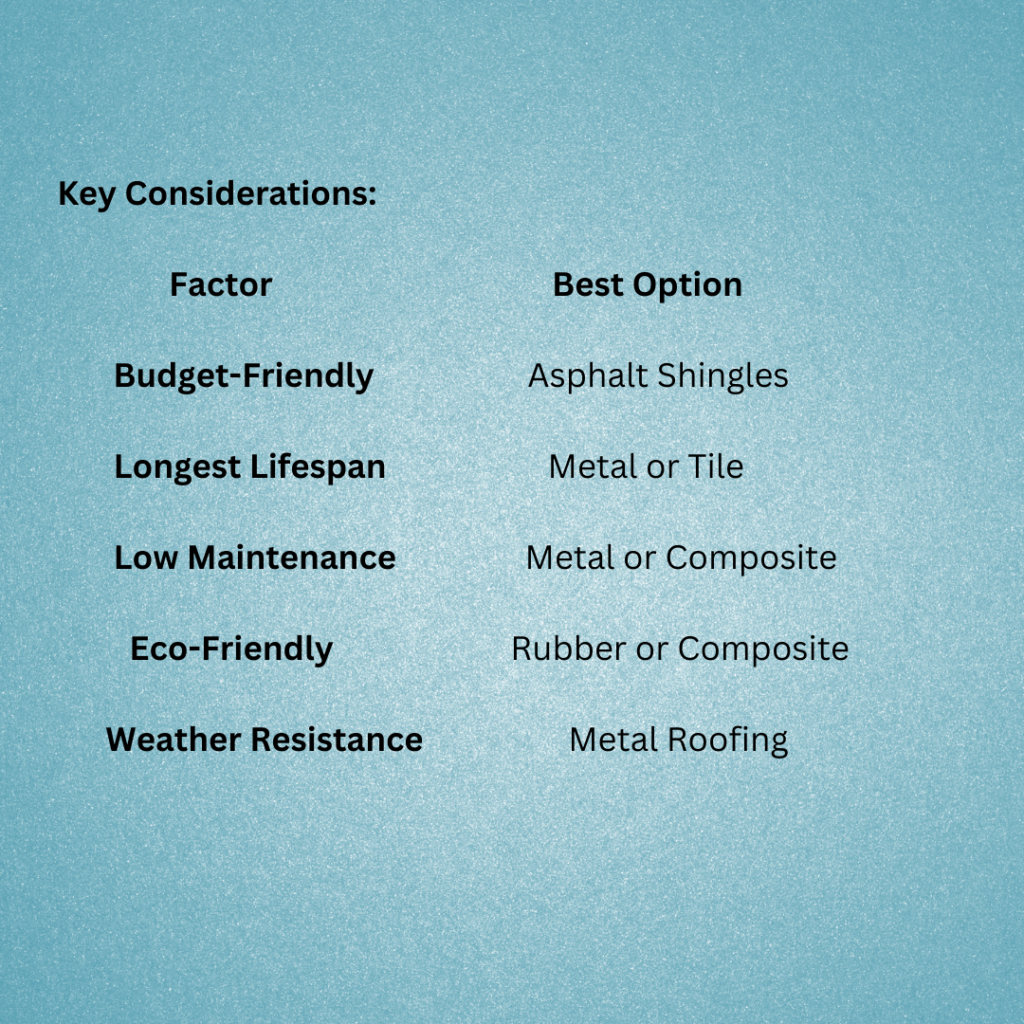
ROOFING REPLACEMENT VS REPAIR
When to Replace a Roof
If your roof is showing signs of widespread damage or approaching the end of its useful life, replacement can be a more cost-effective and long-term solution.
Ideal for:
- Multiple leaks, sagging, or water damage
- Recurring repairs or patch jobs
- A roof that’s 20–25+ years old (for asphalt shingles)
- Preparing your home for resale or market appeal
- Upgrading to better materials for durability or energy efficiency
Why Replace Before It Leaks?
- Prevent hidden damage: Leaks can cause rot, mold, and structural issues.
- Avoid emergency costs: Emergency repairs are often more expensive.
- Protect your investment: A new roof enhances home value and curb appeal.
- Uncover underlying problems: A full replacement reveals issues repairs might miss.
Key Considerations
Factor | Repair | Replacement |
Extent of Damage | Minor, localized issues | Widespread or ongoing problems |
Roof Age | Newer roof in good condition | Roof near or past its lifespan |
Cost | Lower initial cost | Higher upfront, lower long-term costs |
Frequency | Occasional issues | Frequent issues or maintenance needed |
Long-Term Value | Short-term fix | Long-term peace of mind and ROI |
ROOF INSTALLATION PROCESS
1. Initial Inspection and Planning
Inspection & Assessment
A qualified roofing contractor will evaluate your existing roof, checking for structural issues, water damage, and determining whether a full replacement or reroofing is best.
Material Selection
You’ll choose from materials like asphalt shingles, metal, tile, or composite, based on durability, style, and budget.
Permitting
We’ll handle acquiring any necessary building permits to ensure your project meets local codes and regulations.
2. Preparation and Tear-Off
Site Preparation
Protective tarps, sheeting, and debris bins are set up around your property to prevent damage and make cleanup easy.
Tear-Off Old Roofing
We remove the existing roof layers—shingles, underlayment, and flashings—down to the roof decking.
Deck Inspection
The exposed decking is thoroughly inspected for rot or weakness. Damaged sections are repaired or replaced to create a solid base.
3. New Roof Installation
Underlayment Installation
A waterproof underlayment (like synthetic felt or ice & water shield) is laid over the decking for moisture protection.
Flashing Installation
Metal flashing is added around chimneys, vents, skylights, and roof edges to prevent leaks in vulnerable areas.
Roofing Material Installation
Your selected roofing material is installed using precise, manufacturer-approved methods for lasting protection and performance.
Ventilation & Insulation Check
Proper attic ventilation and insulation are evaluated and addressed to improve energy efficiency and prevent moisture problems.
Ridge Cap Installation
Ridge caps are installed along roof peaks for a clean finish and added defense against wind and water.
4. Cleanup and Final Inspection
Thorough Cleanup
We remove all roofing debris, sweep the yard for stray nails with magnets, and leave your property spotless.
Final Inspection
A final walkthrough ensures your roof is properly installed, up to code, and ready to withstand the elements.
ROOF MAINTENANCE TIPS
Roof Maintenance Guide for the Pacific Northwest
In the wet and often unpredictable climate of Seattle and the greater Pacific Northwest, proactive roof maintenance is essential. Seasonal upkeep not only extends the life of your roof but also protects your home from water damage, moss buildup, and costly repairs.

